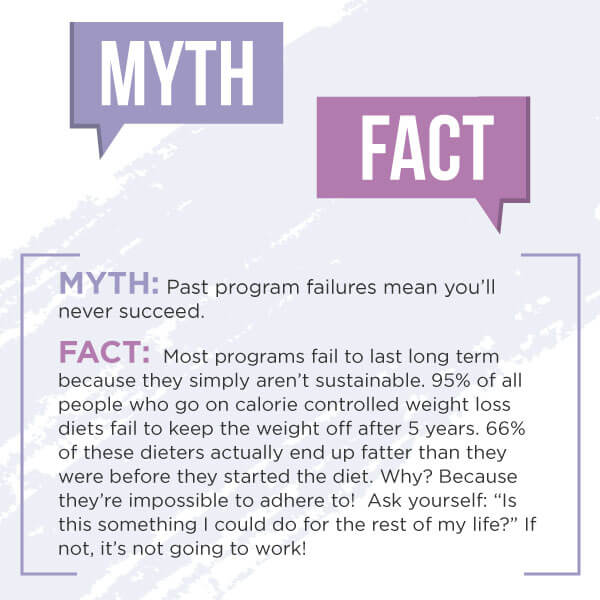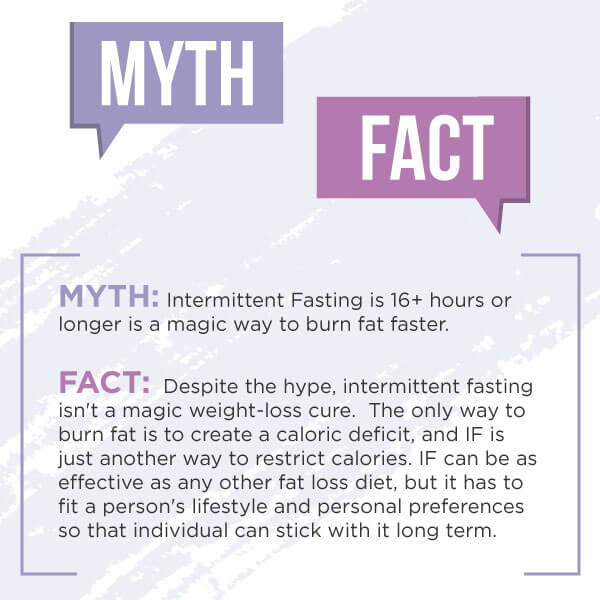If you want to live a healthy, happy & balanced life, proper exercise and nutrition is essential. Most women are aware of this, many still fall short of reaching their fitness goals.
Part of the problem is the advice the mainstream industry promotes…
It’s no secret that the Fitness industry constantly trying to sell you on all kinds of convincing, yet completely inaccurate thoughts regarding the most effective ways to lead a fit and healthy lifestyle.
The most common ones myths have been around for ages and have no scientific evidence to back them up….
This continues to cause mass amounts of confusion for those still trying to figure it all out.
That’s why, with a degree in Exercise Physiology and over a decade of experience in the field of female health & fitness, I’m here to take science of the experts and making it work for you- the busy women
It’s time to bust some of these myths that seem to be standing between you and that BeyondFit life you so desperately want.
If you’re ready to start an exercise program, or improve the one you’re already using, keep reading.
Here are several of the most common fitness myths – and what to do instead.

MYTH: Detoxing is a quick fix.
FACT: Most “detox” products (think: pills, juice, tea etc) are scams. Don’t waste money on expensive “detox” supplements Why? Because our bodies automatically do it for us! Our bodies are amazing and fascinating in how they keep us healthy. You don’t need to throw money down the toilet (Those supplements really just create expensive pee!) with detox supplements. Our own liver and kidneys help our bodies detoxify naturally, so we don’t need to go to any extreme measures of detoxifying. You can, however, help your body get back on track by focusing on whole foods, drinking plenty of water, and getting a proper balance of activity and rest. (Read more: LIVING THE BEYONDFIT LIFE)

MTYH: Lowering calories will help you slim down quick.
FACT: Yes, some low calorie diets may start their diet off by losing a good amount of weight- in the long run they end up doing more harm than good. Low calorie dieting causes many hormonal and metabolic changes. Low Calorie diets slow down thyroid production and disrupt hunger hormones. They also destroy muscle, which is the number way one to speed up (or slow down) your metabolism. (Read more: DIETS DECODED)

MYTH: Exercising longer will allow you to eat more.
FACT: If you want to boost your metabolism (which thus allows you to eat MORE without gaining weight) you need to ditch longer duration workouts for shorter, high intensity training. In the world of Exercise Physiology, EPOC, or excess post exercise oxygen consumption, refers to the higher metabolic rate that is enjoyed by an intelligent exerciser long after their workout is over. Research shows that results from this hormonal “after-burn,” which is generated when exercisers are working at or near 100% of their V02 Max (aka they are breathless), can last up to 24-48 hours beyond the actual workout. In addition, studies show these results can be seen in bouts of effort as short as 1-5 minutes. Rather than being linked to duration, the amount of EPOC you experience is actually directly linked to the intensity of your workout. Shorter duration workouts allow you to increase the intensity so that you are able to take full advantage of EPOC and it’s hormonal after-burn, burning fat (and food) long after your workout is over. (Read more: EXERCISE EFFICIENCY: MORE FOR LESS)

MYTH: Rest days aren’t needed for success.
FACT: Studies show that total body workouts in combination with REST DAYS are linked to improved muscle recovery rates. Back-to-back workouts without a day to rest and recover leads to fatigue, increased cortisol, and burn out. In addition, whenever you lift a weight, a stress is placed on your central nervous system (CNS). When you’re stimulating the CNS day after day after day, eventually it begins to fatigue and the overall amount you’re able to lift will decrease over time. The only way to prevent this from happening is to give the CNS a complete break from training, which works best if your program includes total body workouts and scheduled rest days. With total body workouts plans like this, you give your body time to recover in between training sessions. This means more fat burning, more muscle building, and less muscle soreness or likelihood of injury. (Read more: 5 REASONS YOU NEED TOTAL BODY WORKOUTS)

MYTH: Past program failures mean you’ll never succeed.
FACT: Most programs fail to last long term because they simply aren’t sustainable. 95% of all people who go on calorie controlled weight loss diets fail to keep the weight off after 5 years. 66% of these dieters actually end up fatter than they were before they started the diet. Why? Because they’re impossible to adhere to! You can have the greatest program on the planet, but if you’re not actually USING the tips that you have, they’re not going to become weapons that work. That’s why the ultimate (and often forgotten) fat loss weapon doesn’t relate to a diet or exercise plan. It’s adherence. And it relates to effort and your program’s ability to fit into your LIFEstyle. you have to be able to stick with whatever plan you choose.
- Find what works for you and do it.
- Then do it again.
- And again.
- Again.
- On repeat. Again
Ask yourself: “Is this something I could do for the rest of my life?” If not, it’s not going to work! (Read more: THE ULTIMATE (FORGOTTEN) FAT LOSS WEAPON)

MYTH: Intermittent Fasting is 16+ hours or longer is a magic way to burn fat faster.
FACT: Despite the hype, intermittent fasting isn’t a magic weight-loss cure. The only way to burn fat is to create a caloric deficit. (aka burning more fat than your body consumes). Any meal, especially those rich in the combination of fat and starch/sugar will elicit a fat storing response if they exceed caloric needs or perpetuate a hyper-insulin state that impedes fat release from the cells.
The bottom line is that IF is just another way to restrict calories.
While studies show that fasting does lower glycogen, increase glucagon, lower insulin, lowers leptin, lowers calorie load, re-sensitizes hormone receptors, due to the recent mainstream popularity, the advantages have been exaggerated, the disadvantages have been ignored, and the actual science takes a back seat to hype and advertising.
While there are some benefits to shorter periods without food (think: a nighttime fast in which your last meal is eaten between 6 and 8pm and your first meal eaten around 8am the next day) the 16+ hour daylight fasts have many downsides that cause the diets to backfire long term.
There is evidence, both in the science literature, and in real world case studies, that IF can be as effective as any other fat loss diet, but it has to fit a person’s lifestyle and personal preferences so that individual can stick with it long term.
As with all things, sustainability is key. (Read more: LIVING THE BEYONDFIT LIFE)
 MYTH: Eating for Two (pregnancy).
MYTH: Eating for Two (pregnancy).
FACT: Healthy weight gain during pregnancy is a sign of a healthy pregnancy & a healthy, growing baby. It’s not something to be feared.
But with that said, just because you’re growing a baby doesn’t mean you’re get a free pass to stuff our faces with donuts and pizza all day.
As with many things, balance is key. Though you do need extra calories to support a healthy pregnancy, it’s not necessary to ”eat for two” as many women are told.
The average pregnant woman needs only about 300 healthy calories more a day than she did before she was pregnant. This will help you ensure that you gain the right amount of weight during pregnancy and give your growing baby the nutrients he or she needs. You should always ask your physician how much weight you should gain, as each mom and baby is different. But in general, if you’re a woman who was average weight before getting pregnant, your aim should be to gain somewhere between 25 to 35 pounds after becoming pregnant. (Read more: EATING DURING PREGNANCY)

MTYH: Working Out is Dangerous During Pregnancy.
FACT: Now that you’re pregnant, you may be scared to continue exercising. Most women know that exercise during pregnancy is safe, but myths and misconceptions still exist, many of which hold women back from having the healthiest pregnancy possible.
There is a lot of fear out there that stops pregnant women from exercising.
But did you know that exercising during pregnancy has some amazing benefits?
Benefits of Exercising During Pregnancy:
- Detoxifying the body
- Increasing insulin sensitivity
- Reducing stress
- Increasing energy level and mental clarity
- Boosting metabolism
- Improving cardiovascular function
- Helping the brain gain better control over the body
- Maintaining appropriate weight gain
- Control Blood Pressure
- Reduce Nausea
- Fight Pregnancy Acne
- Boost Your Immune System
- Prevent Leg Cramping
- Beat Heartburn
- Avoid Incontinence
- Improve Cardiovascular Health & Circulation
- Increase Energy Levels
- Help You Sleep
When it comes to exercise while pregnant, being inactive is the real risk!
The benefits of proper prenatal exercise are undisputed – for both mom and baby. In fact, many experts say that being inactive is the real risk leading to high blood pressure, excessive aches and pains, and a high risk for gestational diabetes.
Provided that your doctor does not give you any limitations, studies show it is safe to exercise as you did normally before pregnancy, making modifications needed as your belly grows. (Read more: PREGNANCY WORKOUT MODIFICATIONS)

MYTH: I will never get my pre-baby abs back after pregnancy.
FACT: I had two BIG babies in two years and experienced significant diastasis recti after both pregnancies. But with time and the right type of training, I healed my separation & “got my abs back.” If I can do it, you can too!
The key to getting your pre-baby abs back after pregnancy is to take time to rebuild your core and heal the possible diastasis recti that occurs during pregnancy.
With proper exercises designed to help with gaining strength, correcting any pelvic floor issues, and addressing abdominal separation, your abs are most likely to heal naturally post birth with no medical intervention.
Not sure where to get started? Check out the Mom Tummy Rehab sample exercises here! (Read more: HOW TO HEAL DIASTASIS RECTI)